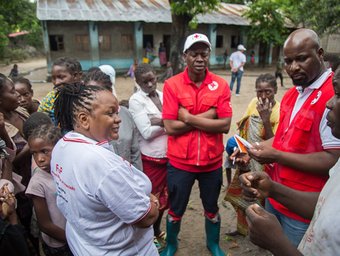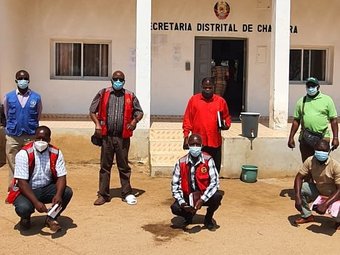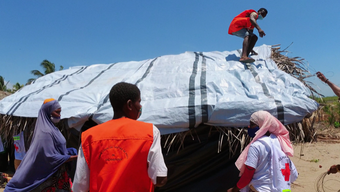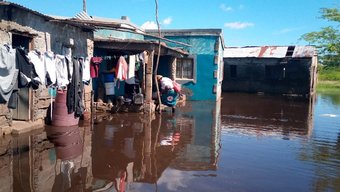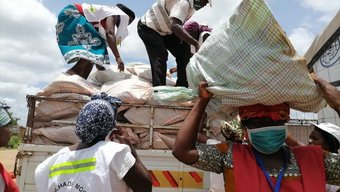Categories
Mozambique
Key facts
Hazards covered by anticipation
Cyclone | Drought (in progress) | Floods
No. of people reached by anticipation (activation)
Approximately 2,500 people will be reached by each Red Cross protocol
Anticipation partners in country
Mozambique Red Cross Society | German Red Cross | Instituto Nacional de Gestao de Riesgo de Desastres | WFP
Inform Risk Index (2022)
Hazard and exposure: 7.8
Vulnerability: 7.6
Lack of coping capacity: 6.3
Total: 7.2 (very high)
Rank: 9
Country profile
Mozambique has a long coastline - which stretches for around 2,700km along the Indian Ocean - and tropical cyclones regularly hit, both along the coast and inland. The country also has 104 rivers, which form 13 major river basins and 35 sub-basins, and flooding due to extreme rainfall and storms is common. Human settlements and economic activities are largely concentrated along the coast and the major rivers, creating hotspots of vulnerability in these hazard-prone areas.
Due to its low adaptive capacity, Mozambique’s vulnerability to extreme weather events is among the highest in Africa. Floods, tropical cyclones and droughts acutely impact poor people, as do epidemics.
Disaster management in Mozambique is coordinated by the National Institute for Disaster Management (Instituto Nacional de Gestão de Calamidades), which works through regional offices and community-based disaster risk-reduction committees on preparedness, early warnings and response. Actors working on anticipatory action in Mozambique collaborate closely with the National Institute for Disaster Management, as well as with meteorological and hydrological agencies including the Instituto Nacional de Meteorologia and the Direcção Nacional de Gestão de Recursos Hídricos.
Projects
Forecast-based financing: closing the gap between disaster preparedness and emergency relief in Southern Africa
Since 2015, the Mozambique Red Cross Society has been partnering with the German Red Cross and national institutions to establish forecast-based financing systems in the country. The Early Action Protocol (EAP) for Cyclones was the first Red Cross EAP to be approved in Africa. An EAP for Floods is under review, and a new EAP for Drought began as part of a regional project in 2020.
View the project page here.
Since 2019, WFP has been working with the Instituto Nacional de Gestao de Riesgo de Desastres and other national actors to develop nationwide forecast-based financing for drought, with a focus on food-insecure communities and people living in Gaza and Tete provinces.
View the project page here.


